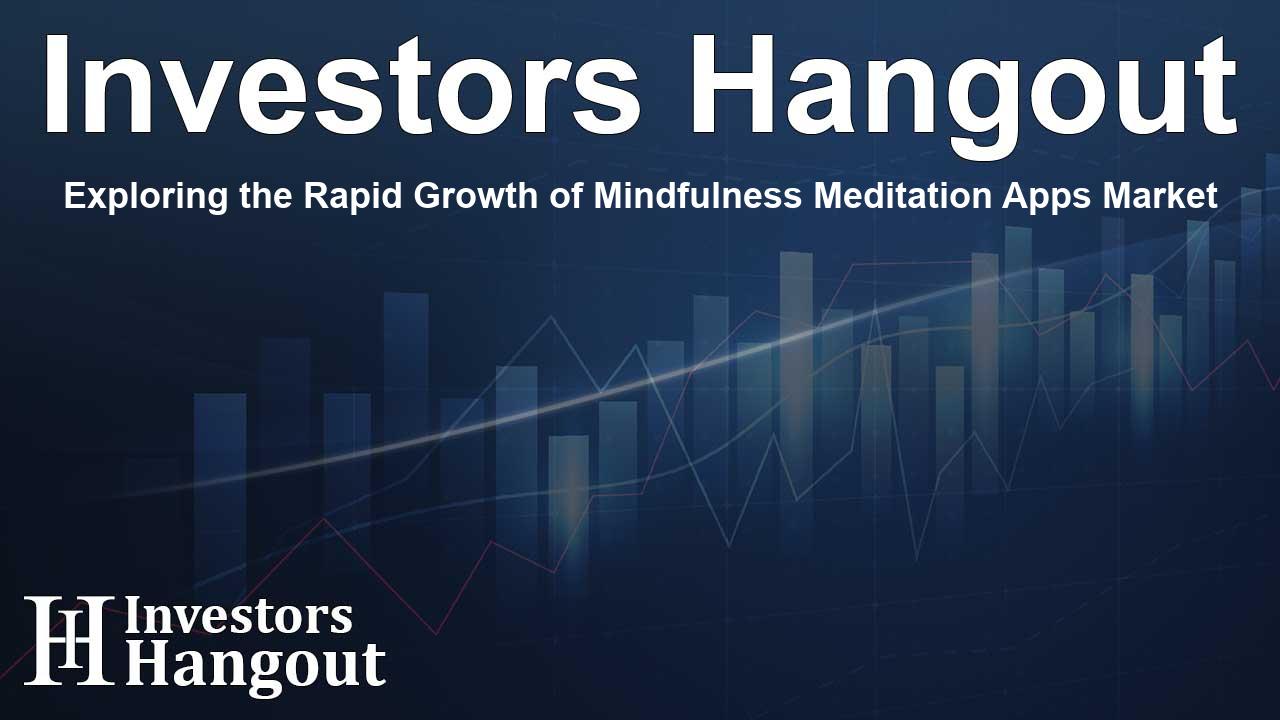Exploring the Rapid Growth of Mindfulness Meditation Apps Market

Mindfulness Meditation Apps Market Overview
The Mindfulness Meditation Apps Market is witnessing remarkable growth, propelled by an increased global focus on mental health and wellness. With busy lifestyles and high-stress levels, more individuals are turning to digital meditation solutions to promote relaxation and enhance focus. Currently valued at USD 1.2 billion, the market is projected to soar to USD 3.2 billion by 2033, marking a compound annual growth rate (CAGR) of 14.5% from 2026 to 2033.
Driving Forces Behind Market Growth
This booming market is largely driven by various factors, including heightened consumer awareness regarding mental health, an escalating interest in self-care practices, and the rampant proliferation of smartphones. Rising stress levels have led many individuals to seek cost-effective, accessible mental health tools. Mindfulness meditation apps play a vital role in offering guided practices and useful techniques to integrate mindfulness into daily life.
The Role of Technology in Meditation Solutions
Technology is at the forefront of this evolution. Innovative apps utilize artificial intelligence and data analytics to curate personalized meditation experiences. Many of these apps are compatible with wearable technology, allowing users to monitor stress and mindfulness levels in real-time. Furthermore, the inclusion of immersive features like augmented reality (AR) is reshaping user experiences, while cloud technology enhances access to updated content and supports user engagement across multiple devices.
Understanding Market Dynamics
The dynamics of the Mindfulness Meditation Apps Market are shifting as employers increasingly prioritize mental wellness initiatives. Many organizations are offering access to meditation apps as part of their wellness programs, recognizing that improved employee mental health directly correlates with heightened productivity and workforce retention. This trend fosters partnerships between tech developers and corporate entities, driving subscription revenues and boosting market growth.
User Preferences and Market Segmentation
The growth in this sector isn't uniform; various demographic segments show different preferences in their meditation practices. Factors such as age, lifestyle, and cultural background play significant roles in shaping user behavior. Personal use of meditation apps is vast, encompassing all age groups, while corporate wellness programs have seen a rise in adoption as businesses strive to cultivate healthier working environments.
Regional Insights into Market Expansion
Geographically, North America leads the Mindfulness Meditation Apps Market, closely followed by Europe and Asia-Pacific. Factors such as widespread smartphone adoption, government support for mental health awareness, and corporate wellness initiatives significantly influence growth prospects. The Asia-Pacific region, in particular, showcases rapid expansion due to increasing internet access and a youthful population actively seeking relaxation methods.
Competitive Landscape of the Industry
The competitive environment within the Mindfulness Meditation Apps Market is characterized by a blend of established entities and emerging startups striving to innovate. Industry leaders are focusing on unique features and personalized user experiences, offering freemium and subscription options to attract a broader user base. As competition intensifies, continuously improving app quality and content diversity becomes crucial in maintaining market prominence.
Future Trends and Market Opportunities
The future outlook for the Mindfulness Meditation Apps Market remains optimistic, driven by the continual rise in mental health awareness and technological advancements. Innovations such as community engagement and gamification are set to play pivotal roles in enhancing user involvement and loyalty. As more users integrate these digital solutions into their lives, opportunities for growth will continue to surface, firmly establishing mindfulness meditation apps within the wellness landscape.
Frequently Asked Questions
What is the projected growth rate of the Mindfulness Meditation Apps Market?
The market is expected to grow from USD 1.2 billion in 2024 to USD 3.2 billion by 2033, with a CAGR of 14.5% from 2026 to 2033.
How are technology advancements influencing the market?
Advances in technology, including the use of AI and integration with wearables, enhance personalization and user experience in meditation apps.
What role do corporate wellness programs play in market expansion?
Corporate wellness programs increasingly include meditation apps to promote mental health, thus driving adoption and enhancing workplace productivity.
Which regions are leading in mindfulness app usage?
North America currently dominates the market, with Europe and Asia-Pacific rapidly growing due to heightened awareness and accessibility.
What types of users engage with meditation apps?
The user base spans diverse demographics, including professionals seeking stress relief, students, and older adults focused on mental wellness.
About The Author
Contact Dylan Bailey privately here. Or send an email with ATTN: Dylan Bailey as the subject to contact@investorshangout.com.
About Investors Hangout
Investors Hangout is a leading online stock forum for financial discussion and learning, offering a wide range of free tools and resources. It draws in traders of all levels, who exchange market knowledge, investigate trading tactics, and keep an eye on industry developments in real time. Featuring financial articles, stock message boards, quotes, charts, company profiles, and live news updates. Through cooperative learning and a wealth of informational resources, it helps users from novices creating their first portfolios to experts honing their techniques. Join Investors Hangout today: https://investorshangout.com/
The content of this article is based on factual, publicly available information and does not represent legal, financial, or investment advice. Investors Hangout does not offer financial advice, and the author is not a licensed financial advisor. Consult a qualified advisor before making any financial or investment decisions based on this article. This article should not be considered advice to purchase, sell, or hold any securities or other investments. If any of the material provided here is inaccurate, please contact us for corrections.
